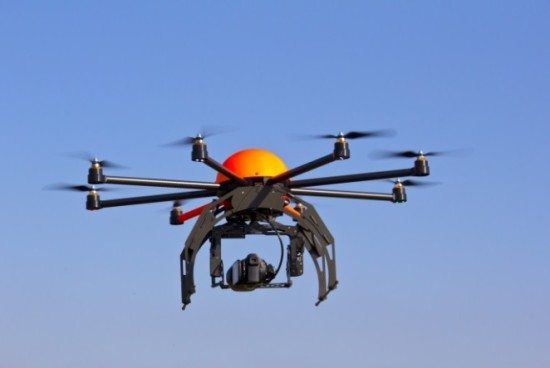Only a few short years ago ‘drones’ were thought to be a phenomenon dreamt up in the latest sci-fi film or the latest military surveillance tech. Who would have thought drones would soon be filling the UK’s skies. Consumers can now expect faster deliveries to their doorstep than ever before, following Amazon’s announcement to be the first public company to authorise trials of autonomous flying drones in the UK. An ingenious idea that will see parcels delivered around the world faster than you can make your lunch and is likely to transform the way we shop. But, is the innovation also a new exploitable technology with the ability to raise national security threat levels like never before?
Infiltration of commercial airspace
Teal Group, an aerospace and defence consulting company, predicts global spending on the production of drones for both military and commercial use could reach $93 billion (£70 billion) in the next ten years[i]. Further more, the Association for Unmanned Vehicle Systems International (AUSVI) recently reported drones will create hundreds of thousands of jobs and bring over $82 billion (£61 billion) in revenue for the US economy in the same period[ii]. Drones are already being used in television production, as thermal imaging cameras for law enforcement to catch suspects and by utility firms to check for leaks. The introduction of drones for delivery services will mean drones are becoming more readily accepted and used.
Despite the clear benefits, drones must be embraced and feared in equal measure. Where they might look fairly innocent, what you find after a more detailed analysis is terrifying. As the versatility in configuration means they could be adapted to positively suit almost any industry and requirement, on the flip side, falling in the wrong hands, versatility could also have a negative impact.
Need for regulation
Drones are capable of delivering incendiary devices, grenades, and perhaps even worse, into uncontrolled airspace in the same way that unmanned aerial vehicles have in the past. There are currently no regulations in place to stop someone flying one of these drones into a busy city or airspace.
So, are drones the greatest global security threat of the future? Some may argue the advantages of drones outweigh the negatives. However, in my view, a number of steps need to be taken regardless to protect against hostile drones before a real life disaster occurs. Even military drones have a ‘Human in the Loop’, autonomous drones don’t. The government must implement strict and overarching regulations to help control drone use, especially autonomous drones that are guided by software and GPS location alone. This would include the standardisation of radio frequencies on which drones can operate, making it easier for security teams to intercept entering unchartered airspace. Automated drones should also have regulated flight plans, so enforcement agencies know the owner of the drone, what it’s carrying and its mission, at any given time.
Preventing malicious hacks
Putting in place stringent security measures is vital. As with any connected technology, drones are at risk of being hacked by cybercriminals, meaning software programming needs to be considered more seriously in the development phase. Quality assurance specialists can help to plug any potential loopholes vulnerable to unscrupulous hackers, limiting security and privacy risks from the outset. Although this may not completely remove all threats, it will significantly enhance the chances of drones being managed safely and for the purpose they were designed.
In summary, there is no immediate quick fix solution to the drone dilemma. With both clear and significant positives and negatives, drones have the potential to revolutionise industry as we know it. With obvious benefits across a range of sectors, from energy, logistics, to transport, photography and even to improve our agricultural landscape, does this outweigh the national security argument?
It seems clear drones will form part of our future, with the UK Government recently stating they want to create an environment where drones can be operated safely by 2020. But there are clearly many unknowns. Without stringent regulations already in place, we can’t be certain quality assurance has been implemented throughout the development of drones for commercial use by experienced and trusted programmers. If quality assurance and strict software testing for weak spots isn’t strictly embedded from the very beginning of production, drones could become a target for hackers. What we once saw as a marvel of innovative technologies, could quickly become a tool for malicious attacks.
The opinions expressed in this post belongs to the individual contributors and do not necessarily reflect the views of Information Security Buzz.



